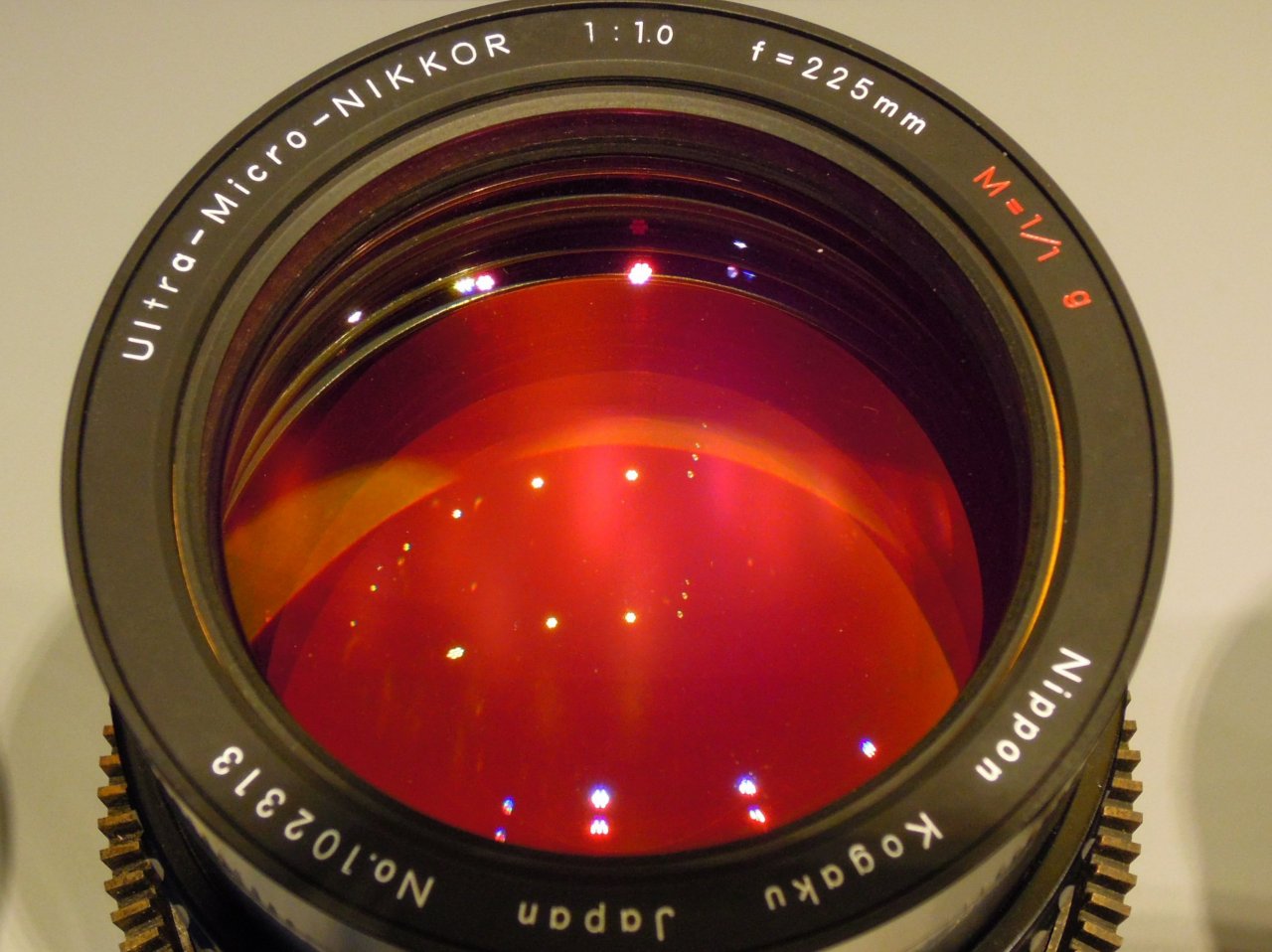
Ultra Micro Nikkor 225mm F1.0g, 1967 Introduction Before I start to talk about the Ultra-Micro-Nikkor details, I want you to show the history of lenses. If I put the picture of those lenses in order, it is meaningless. The important is the background of the history. We can find something visible by exploring the background in development of lenses. Let's find out the Buried History The information about the Ultra-Micro-Nikkor lenses is very limited. If you have any information, data, or books about those lenses, please let me know. After starting this website at the end of October 2001, I had some information which were unknown data until now offered from readers. Also, The Nikon Corp. picks up my website, so I can see the less known engineer's pride and spirit and so on. However, there is more data which I cannot find in the past history. It is not late even from now. But it is almost deadline. If you are the engineer to develop those lenses, please contact me. If you have any glass sample or blueprint, please let me know. I'll update my website when I receive any related information.
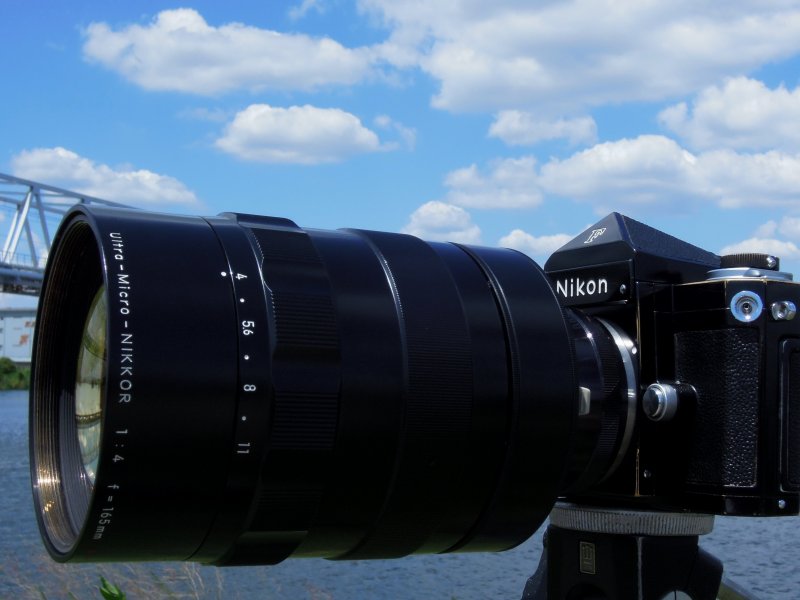
Ultra Micro Nikkor 165mm F4, 1970 The Beginning I think the most readers of this website are interested in camera and Nikkor lenses. Moreover, I guess the readers have some antique cameras, because they are interested in Leica or Zeiss also. Range finder Nikon is attention getting camera because of antique, historic, or for speculative operation in goods. Well, how the people think is free, so the people still want to those range finder cameras are very good. The Nikkor lenses for range finder camera are very expensive which are like an antique now.
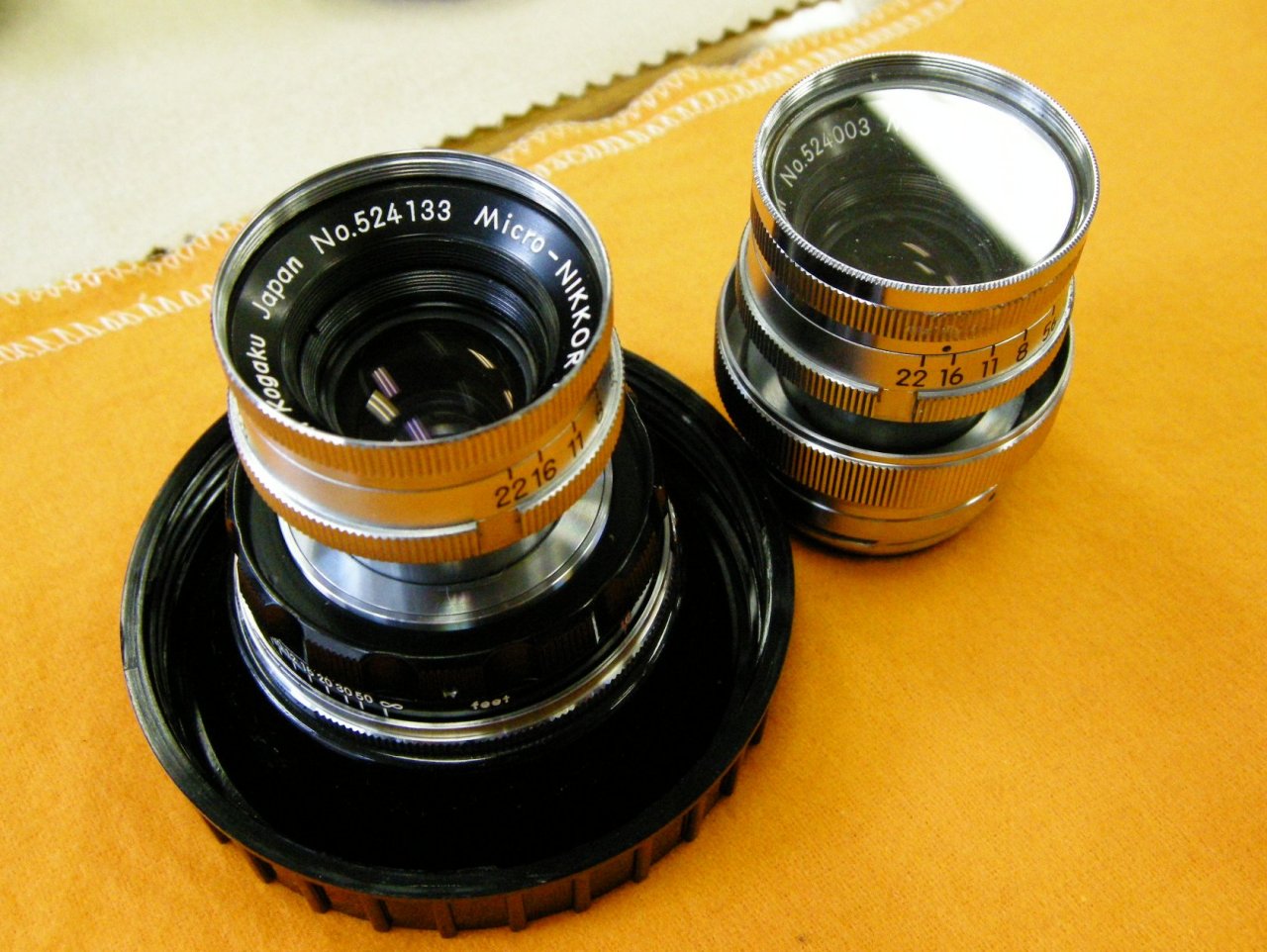
Micro Nikkor 5cm F3.5 Dawn of a Micro Photograph System The appearance of the Micro Nikkor 5cm F3.5 was in October 1956. It was designed for 35mm microfilm system. This lens's designer was Mr. Zenji Wakimoto. He was called the expert of a lens design. Although 1950s was the time which was using the microfilm camera imported from the United States, it had a serious problem for resolution to read the Japanese characters. As we know, Japanese "Kanji" characters are more complicated than alphabet. It is easily understandable the Japanese lens needs more resolution than alphabet lens. But what is microfilm system? Microfilm system was used to save the documents. Before the personal computer was come out, printing processing was analog method. When the company saved the document, it was bulky if it was still paper. Therefore, all documents were taken a picture and saved in the small photograph. Of course, to save into the microfilm, each company orders that to professional people. And that size was not only one size also there were many formats such as postcard size, small window opened, and so on. For all problems, the Nippon Kogaku made the lenses which ware called Micro Nikkor 5cm F3.5 to demand the high-resolution to produces the microfilm photography in Japan. Although other camera company named MACRO for macro lenses, this is the reason only Nikon named macro lens "MICRO". The Requirement Exceeded the Limit In the early 1960s in Tokyo, Otemachi. Japanese electric-appliance makers and famous printing presses had the inquiry to Nippon Kogaku the Micro Nikkor. Nippon Kogaku didn't understand why they call about this lens at this time. Many companies needed the high-resolution lens which can make the circuit photograph (photograph mask) to make a silicone transistor circuits. The normal lens which was commonly used at many printing presses had not enough resolution to make those circuit photographs. Later, Nippon Kogaku understood their requirement, so they began to tackle the high-resolution lens only for photograph mask manufactures. The requirement of specifications was the high-resolution exceeding the limit of a conventional optical lens. Accomplished Extreme High-Resolution Lens: 105mm F2.8 August 1962. It was hot and very humid day in Japan. Kenichi Horie succeeded in single-handed Pacific Ocean sailing crossing by small yacht. He was the first person in the world. It was greatly reported to the Japanese newspaper. Many shopping malls had exhibition about his adventure. I took some pictures with the Kenichi Horie's yacht "MERMAID" at this exhibition. I build a plastic model of "MERMAID" also. Anyway, development of this high-resolution lens was so difficult, because no one has ever made. The challenge to the unprecedented success. The passion to high-resolution lens. Examination and the selection of optical glass material. The glass dissolution required the artisan skill. It required special precision for lens polish. Final step, create the lens curved surface, was not able to do by machine. Hand to hand, Nippon Kogaku technicians did ceaseless quest for extreme well made. Is this craftsman work or a superhuman feat? The optical performance was measured with the precision measuring machine (this was also developed this time). Engineer continued the delicate adjustment. Finally, the accepted certificate was signed with ink. It was stored the heavy wooden box of varnish coating with velvet interior. The development of extreme high-resolution lens 105mm F2.8 was completed. The extreme high-resolution lens was named Ultra-Micro-Nikkor. It was very hot and humid day in Japan.
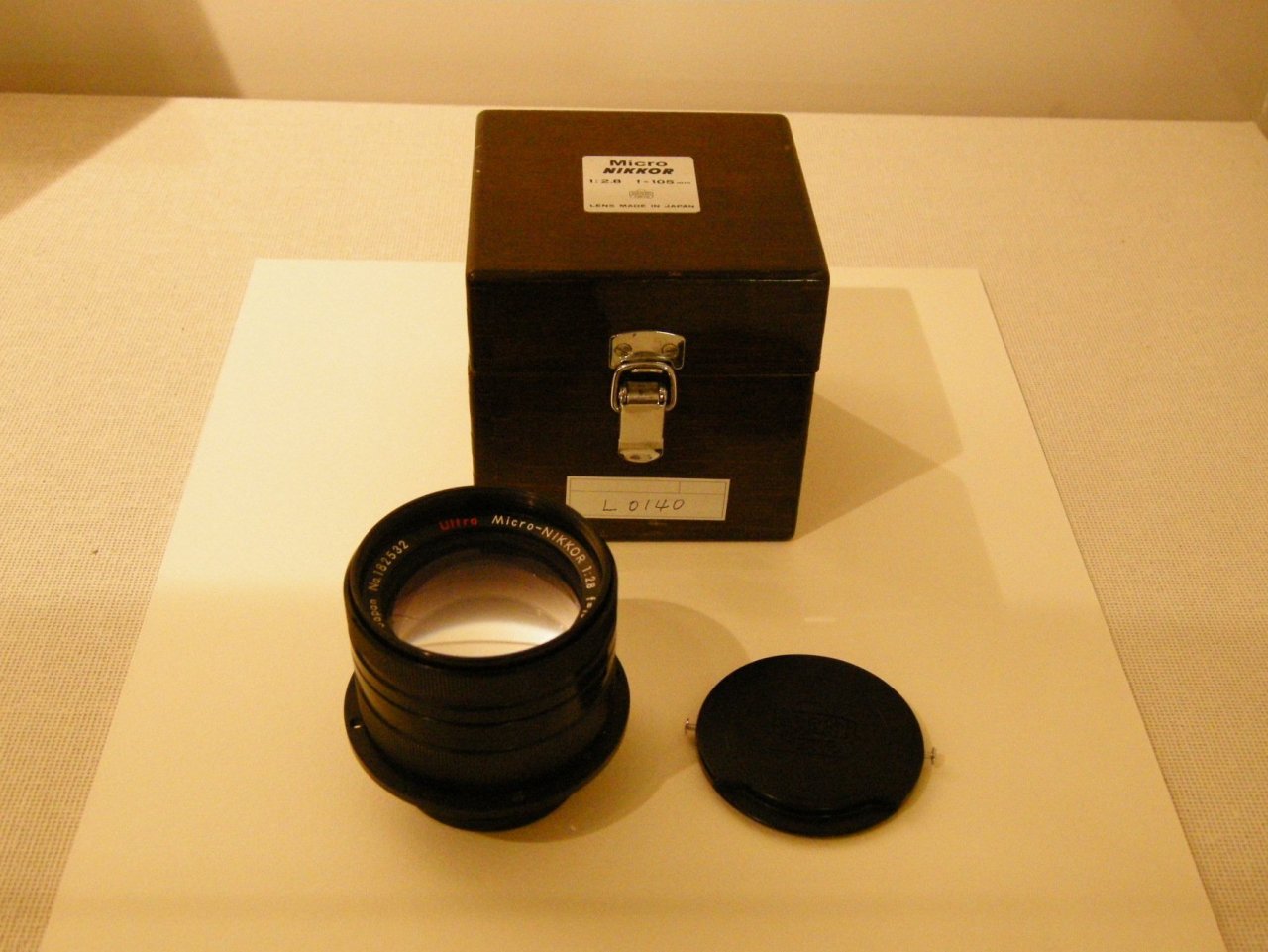
Ultra Micro Nikkor 105mm F2.8 No. 182532 It was Tokyo Olympic game in 1964 that the word "Ultra" got used to Japanese people. By the gymnastics, super difficulty play was called "Ultra C". On the TV broadcast, the announcer screamed loudly with Ultra C. The TV program called "Ultra Q" broadcasted too. Those days, many kids watched the TV Program "ULTRAMAN". The sense of the engineer, who named Ultra-Micro-Nikkor, was wonderful. Difficulties in a development this lens ware unknown from the related reference from Nikon. It was not appeared. I highly recommend to Nikon Corp. to leave this development story. If Ultra-Micro-Nikkor did not exist, it is not too much to say we cannot see those days computer development.
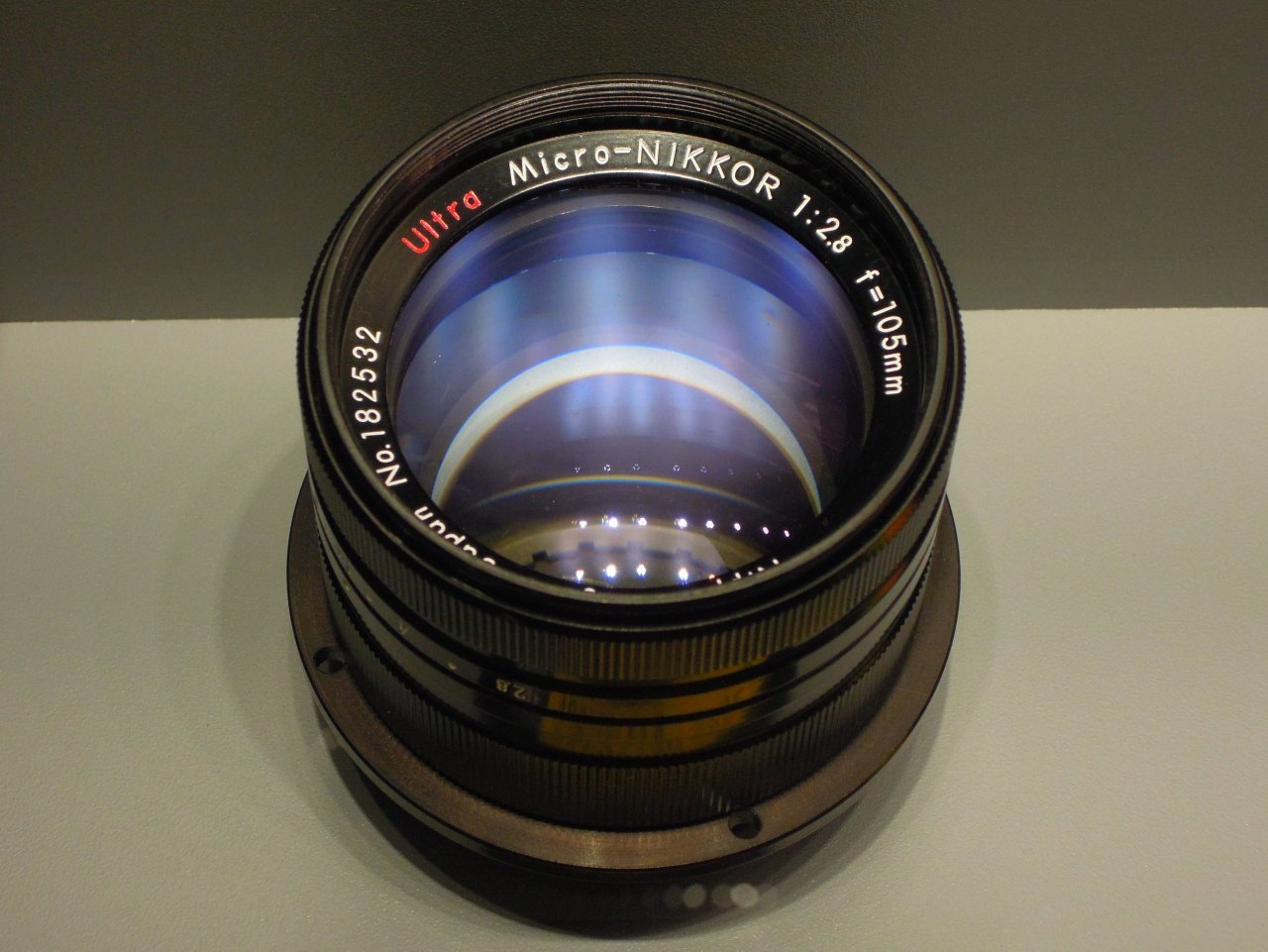
Ultra Micro Nikkor 105mm F2.8 No. 182532 Dr. Koana and Nippon Kogaku In Japan, there is a scientist who led Nippon Kogaku by the specifications of requirement beyond other company's lens specifications. His name is Doctor Zyun Koana. Dr. Koana was a science professor at University of Tokyo. If you are familiar with darkroom development, you know Dr. Koana's name even if you don't know who he is, He is the person who invent the Koana style magnifying glass. It is earlier to explain to call; he is the first doctor of the "Asahi Camera", Japanese shutterbug magazine. This is more familiar.

Dr. Koana demanded the lens which has over 1,000 lines/mm resolution as for the super-micro photographs to Nippon Kogaku. So Nippon Kogaku tries to make the super high-resolution lens, which is based on the 40X object lens (may be the APO PLAN base) of a microscope. The Nippon Kogaku developed this lens as standard magnification is 1/25X under e-line monochromatic lighting (wavelength 546.1 nm). This lens was the first lens which has multi coating. Even they are working an active part as the basis of industry; engineer and industrial machine's name cannot be popular. Under such circumstances, the time is coming to introduce those lenses. Birth of the Ultra-Micro-Nikkor 29.5mm F1.2 lens People all over Japan were exciting to the Tokyo Olympic Games which will be held in Asia for the first time in October 1964. August 1964. Finally, a legendary high-end lens, Ultra-Micro-Nikkor development of 29.5mm F1.2 lens was successfully done. The MONSTER LENS which has 1,260 lines/mm resolution was appeared. This lens has nine elements in six groups. Distortion is -1.3%. It weighs only 800g. Dr. Koana did the reduction copy of all the English novel pages into a small postage stamp size using this lens. It is not several pages. It has 330 pages in the text. This was stored for 12.5mm square. Furthermore, he enlarges from this small size pictures to the original size by using the same lens. Dr. Koana enjoyed this lens well. The book he tries to make it small was "Lady Chatterley's Lover". He has the humor sense, because if he chooses Shakespeare, the story is not exciting. He made this minimum and reads under a microscope. This is the great hobby, isn't it?
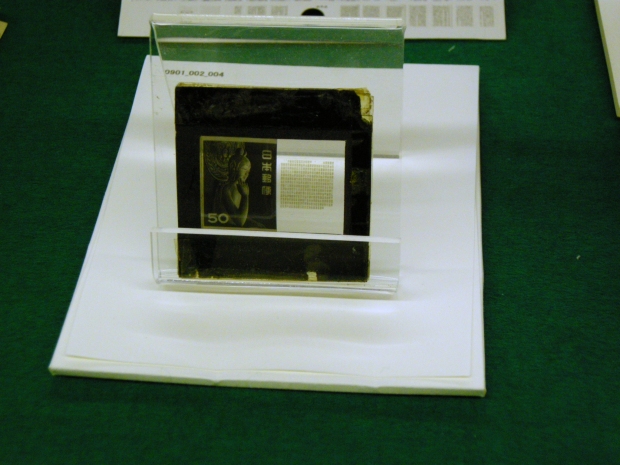
Super-Microphotograph of Lady Chatterley's Lover and Small Stamp Fluorite Legend, Ultra-Micro-Nikkor 29.5mm F1.2 A part of this lens is well known to use the fluorite. The lens element of an L8 is fluorite. Ultra-Micro-Nikkor 29.5mm F1.2 has fluorite legend. Specifications of Ultra Micro Nikkor 29.5mm F1.2
- Focal length : 29.5 mm
- Release date : 1964
In 1969, Ultra Micro Nikkor 29.5mm F1.2 lens was sold for 1,040,000 Japanese YEN.
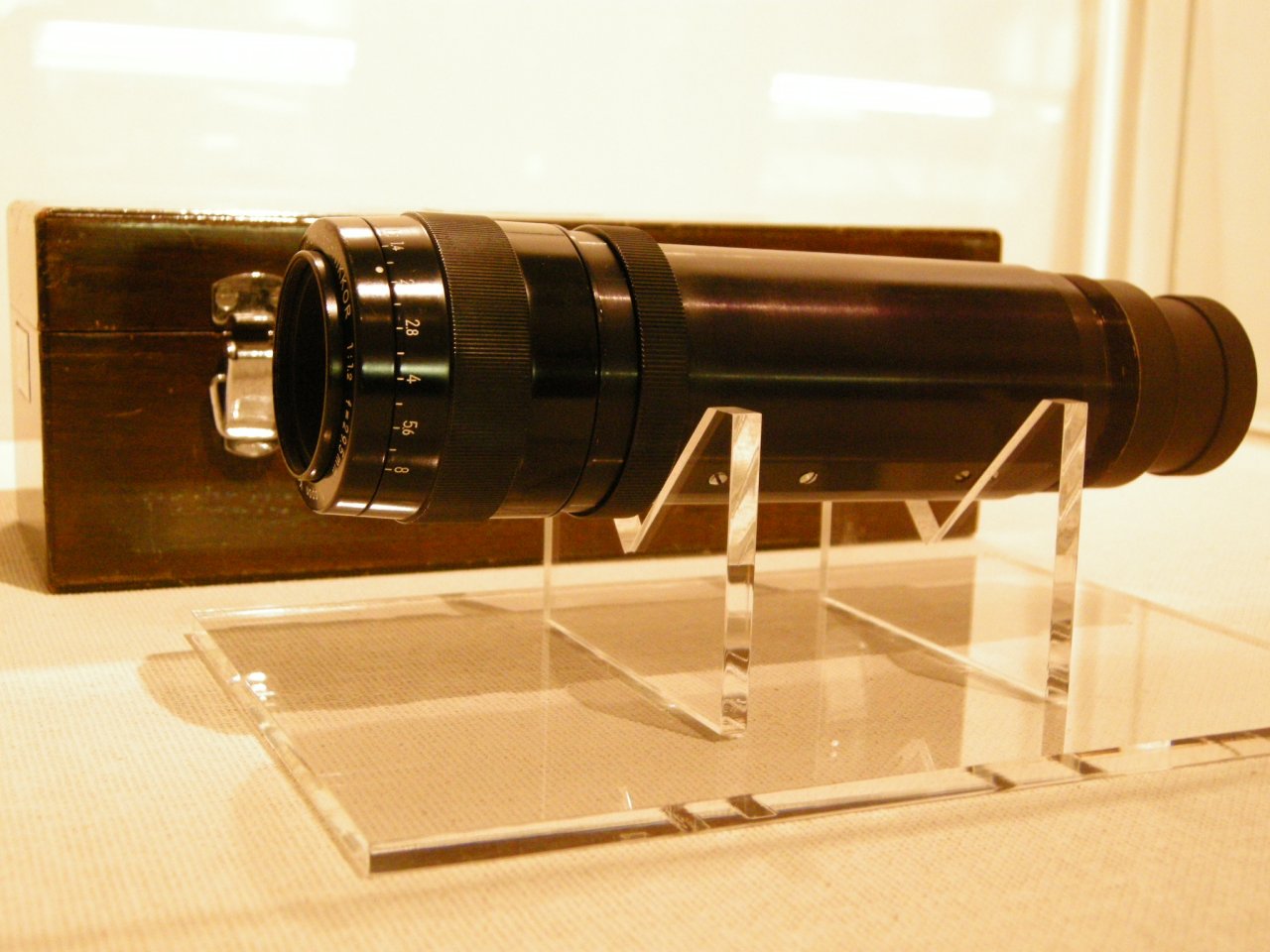
Ultra Micro Nikkor 29.5mm F1.2 No. 5403
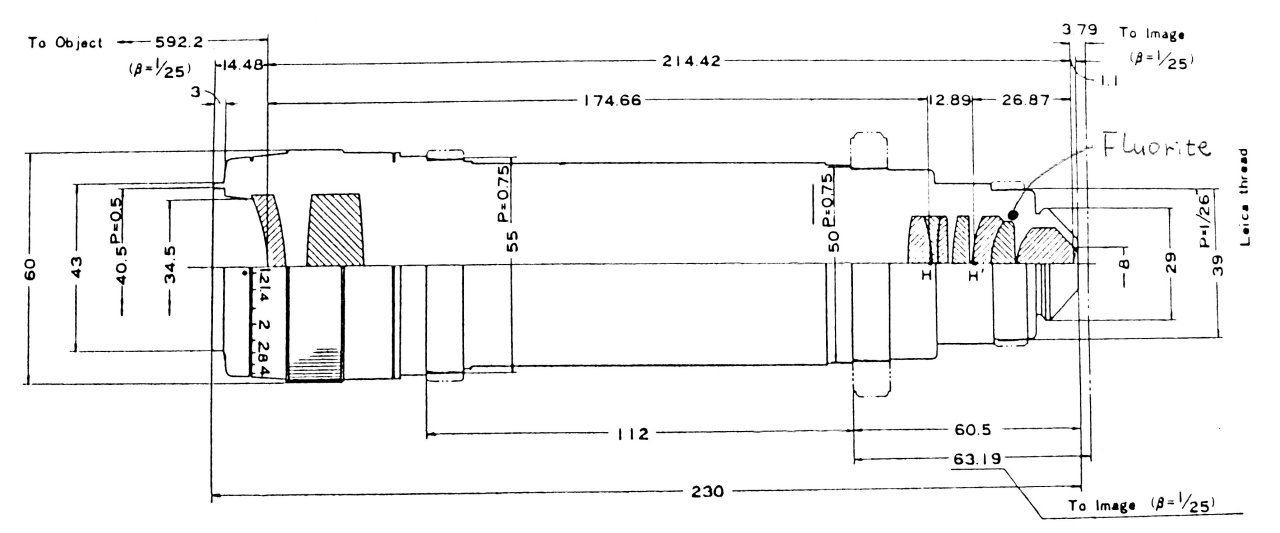
Lens Structure of Ultra Micro Nikkor 29.5mm F1.2 The Day When the Lens Was Awarded According to the record, Ultra-Micro-Nikkor 29.5mm F1.2 was elected as the major 1964 ten new product prize of Nikkan-Kogyo-Shinbun (Daily Industrial Newspaper) selection. Moreover, the Minister of Science and Technology Agency is awarded to this lens's development person in April 1965. I'm so glad to hear about that happy news, because as I told before, in the most case, the engineer's life ends in obscurity.
The lens designer,
Zenji Wakimoto was conferred a Medal with Purple Ribbon
by His Majesty the Emperor for his work in developing the Ultramicro-Nikkor lenses.
I also want to say "It's very good! I understand your great work." to the person who did dissolved glass, ground the lens, finished the highest accuracy, did product inspection, and other all related people.
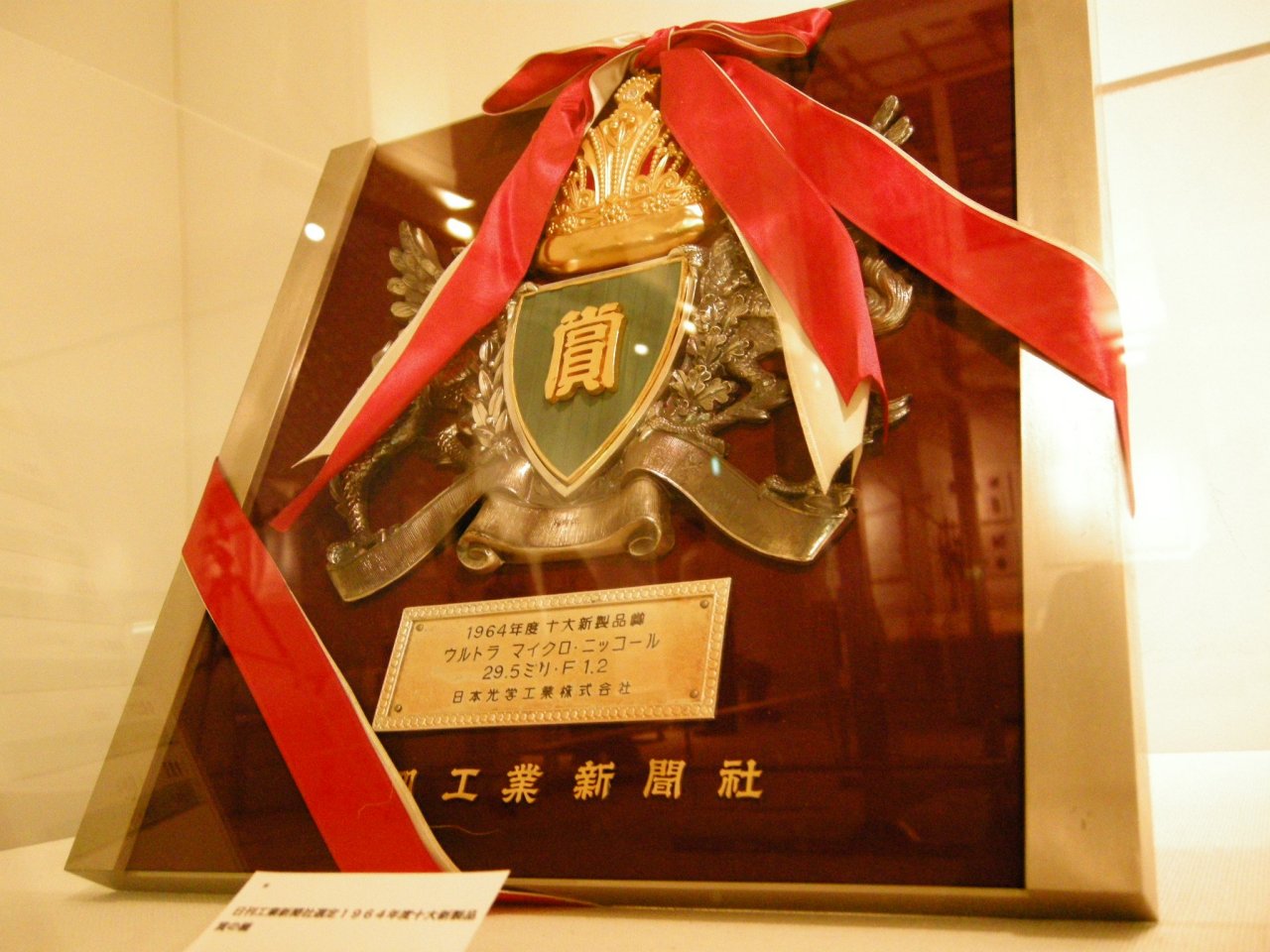
Prize of the Best Ten New Products in 1964 Timeline of the Ultra-Micro Nikkor From the company history "The History of the Nikon Seventy-Five Years, And the Collection of Data", I focus on to the Ultra-Micro-Nikkor lenses. Of course, this book doesn't have all products. It seems that the most popular product is listed. It makes sense to check for the age whether the lens was named "Ultra-Micro-Nikkor" and appearing into the world.
From The History of the Nikon 75 Year, 1993
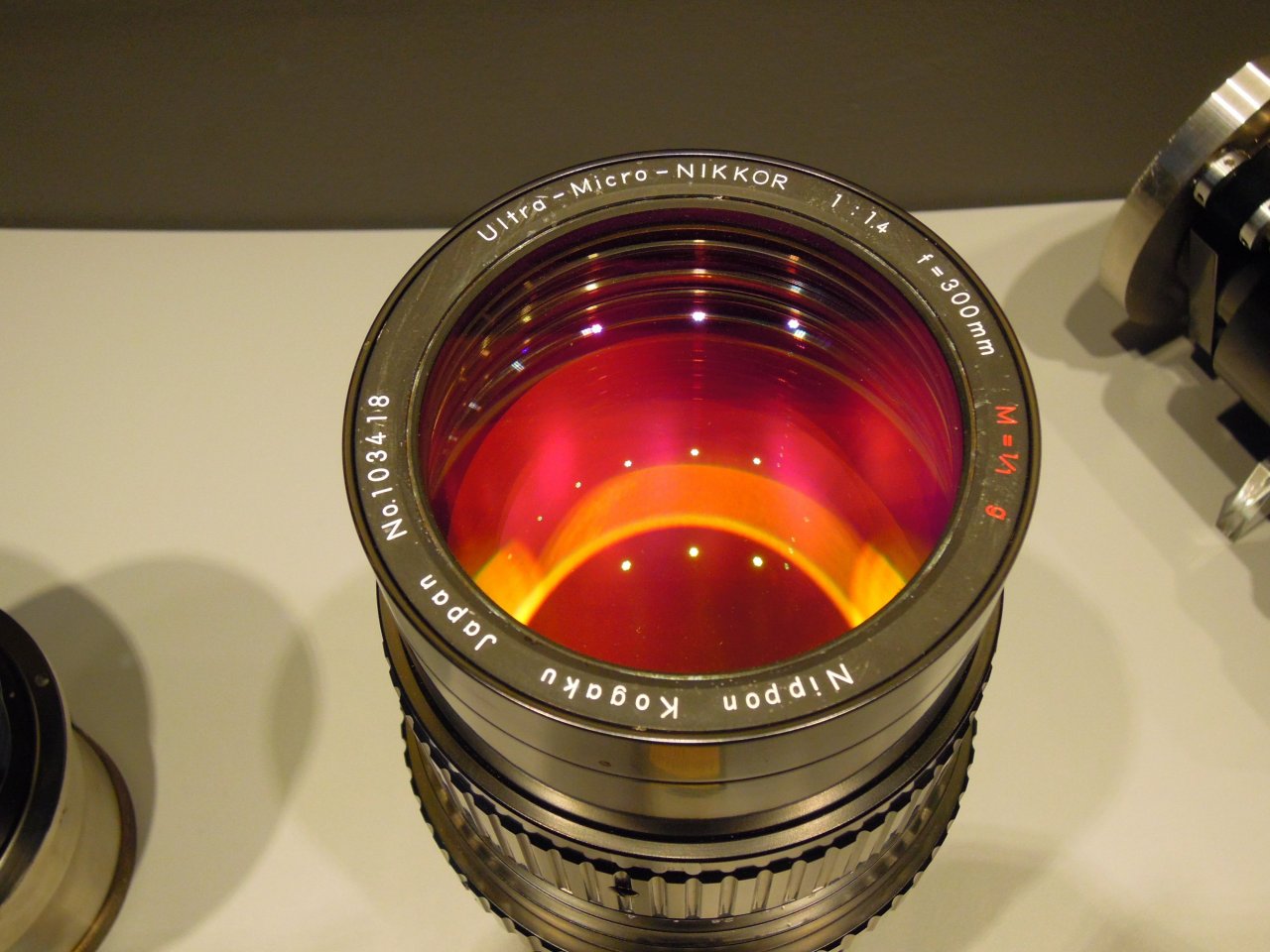
Ultra Micro Nikkor 300mm F1.4g, 1969
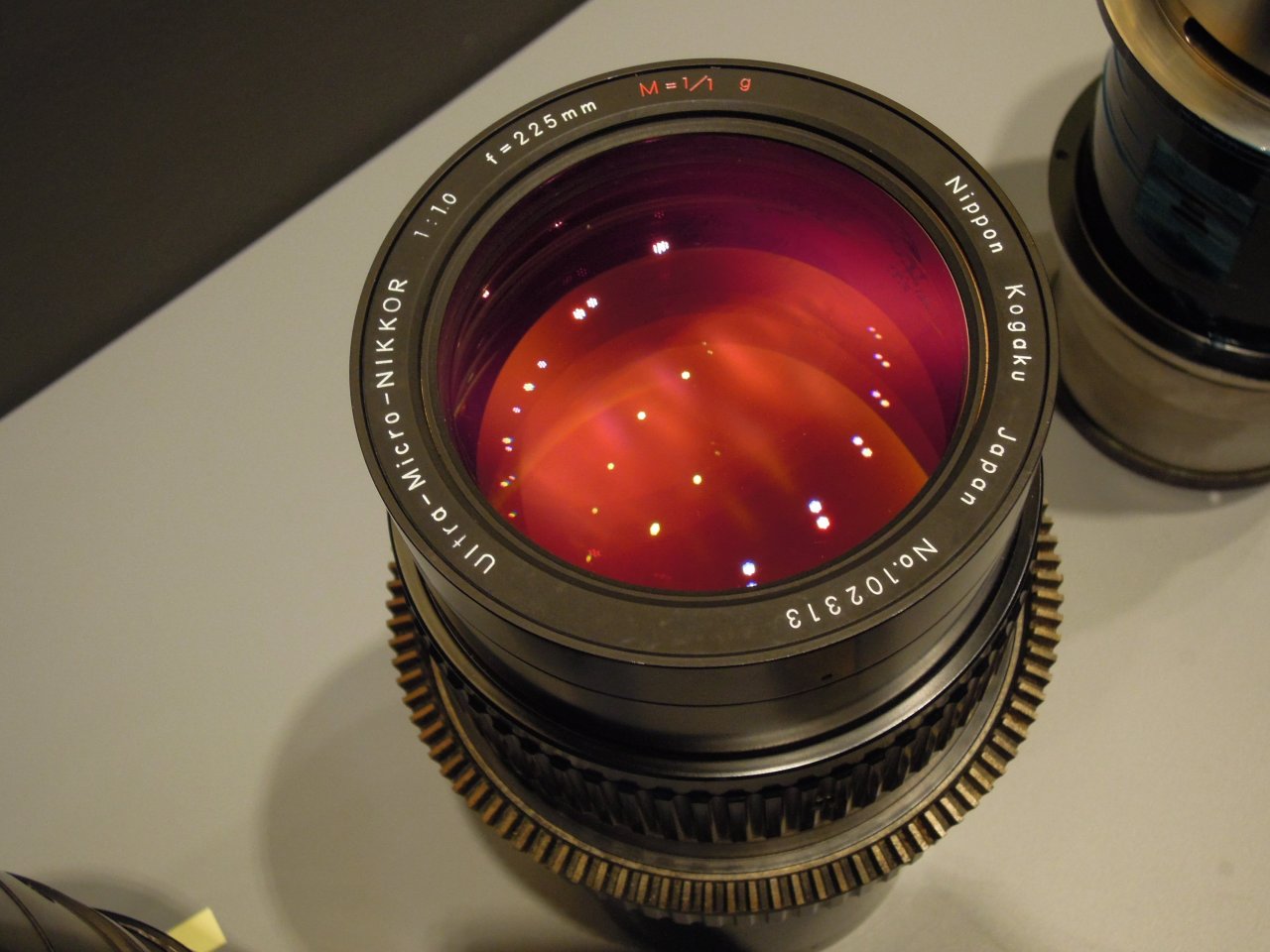
Ultra Micro Nikkor 225mm F1.0g, 1969
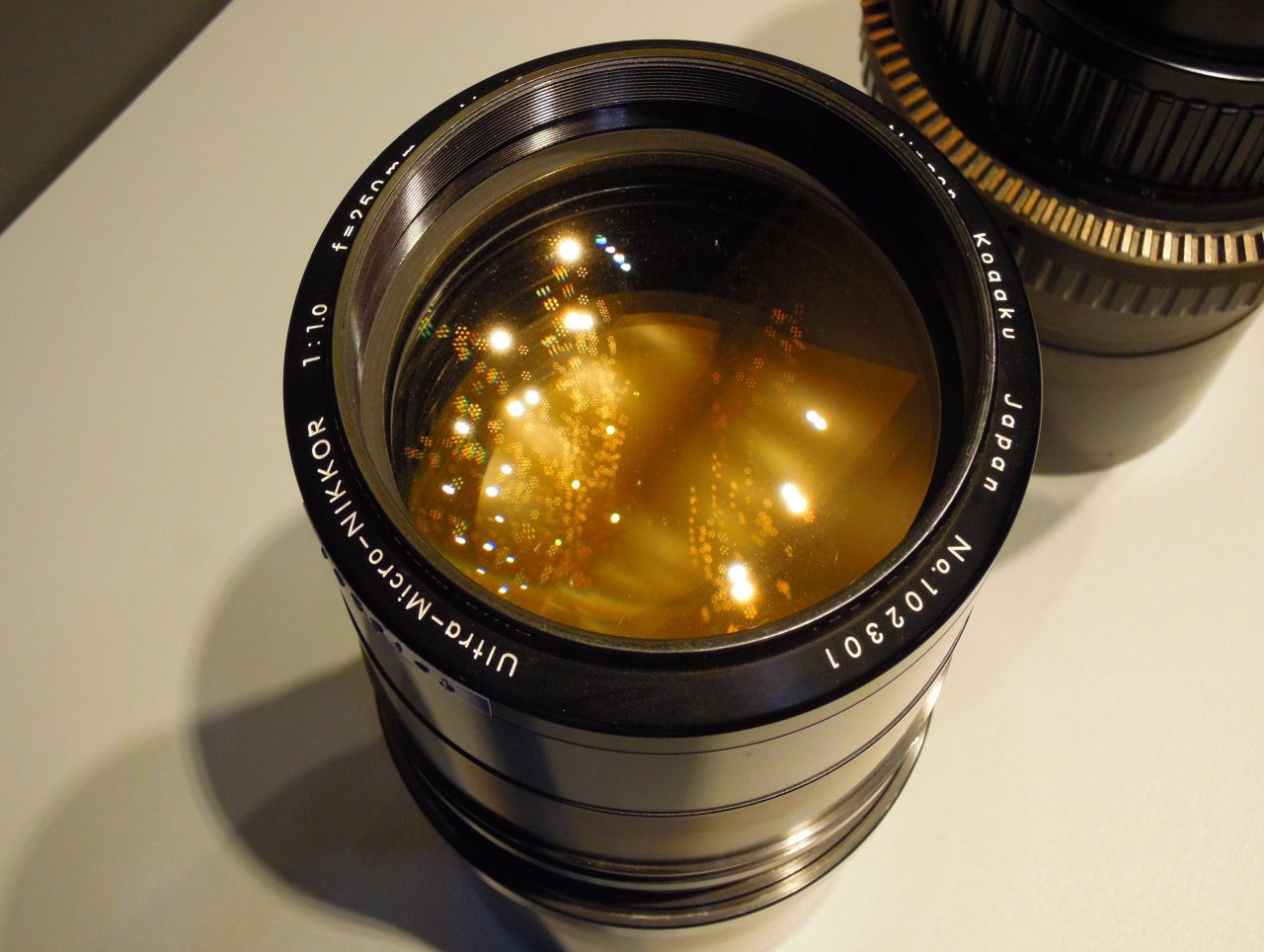
Ultra Micro Nikkor 250mm F1.0, 1967
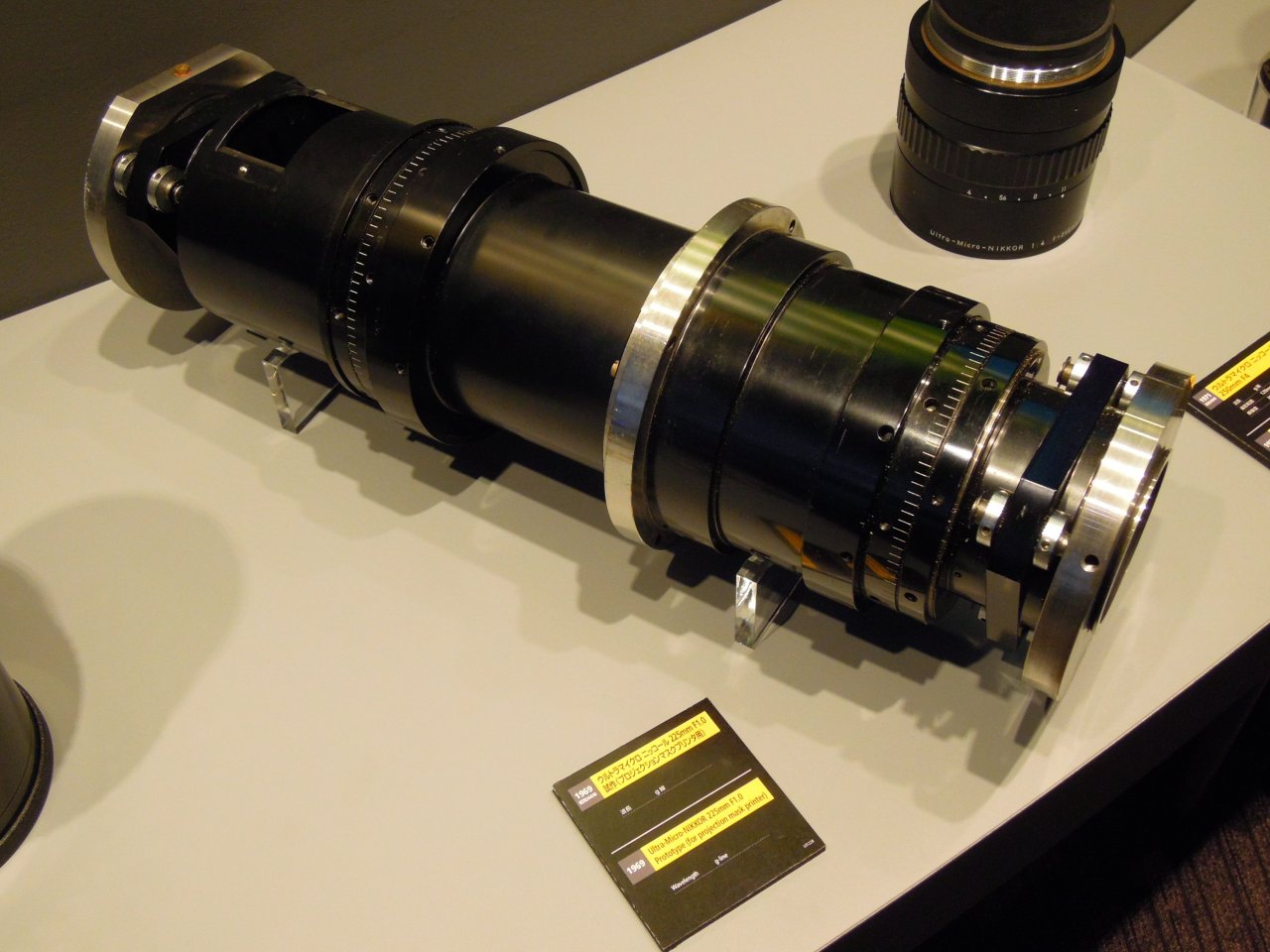
Ultra Micro Nikkor 225mm F1.0 Prototype, 1969 Nikkor Lens in the Wooden Box As you know, usually, the all factory used lens is sold with the paper box. Of course, the rear cap doesn't come with this lens. If it has it, it's like a just temporary plastic. However, Ultra-Micro-Nikkor is sold in the wooden box. Front and rear caps are made by precision machining metal materials. If you want to buy the Ultra-micro Nikkor lens, I highly recommend buying with this wooded box. The inside of box has cloth tension of red velvet color. Again, you never saw this royal splendor. Scenery and Light of Japan, Ojizosan in Spring Sunshine If we see this lens in Japan, it looks so great. The extreme high-resolution lens, Ultra-Micro-Nikkor, is Japan made. This picture was taken with "Ojizosan" in the spring sunlight. The Ojizosan is a guardian deity of children. He has a very strong stone body. He is always wearing a red bib. Nikon F2 Titan camera is not wearing a red bib and she is wearing the Ultra-Micro-Nikkor 28mm F1.8 early model. This lens has power which cures people's tired heart.
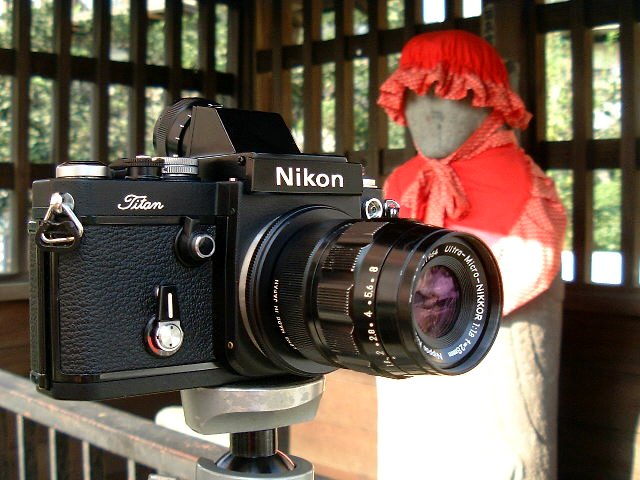
Ultra-Micro-Nikkor 28mm F1.8, Ojizosan Little Boy Dr. Zyun Koana Special Exhibition
You can refer to a report to know the historical background of the Ultra Micro Nikkor lenses.
Please browse the Dr. Zyun Koana Special Exhibition Report.
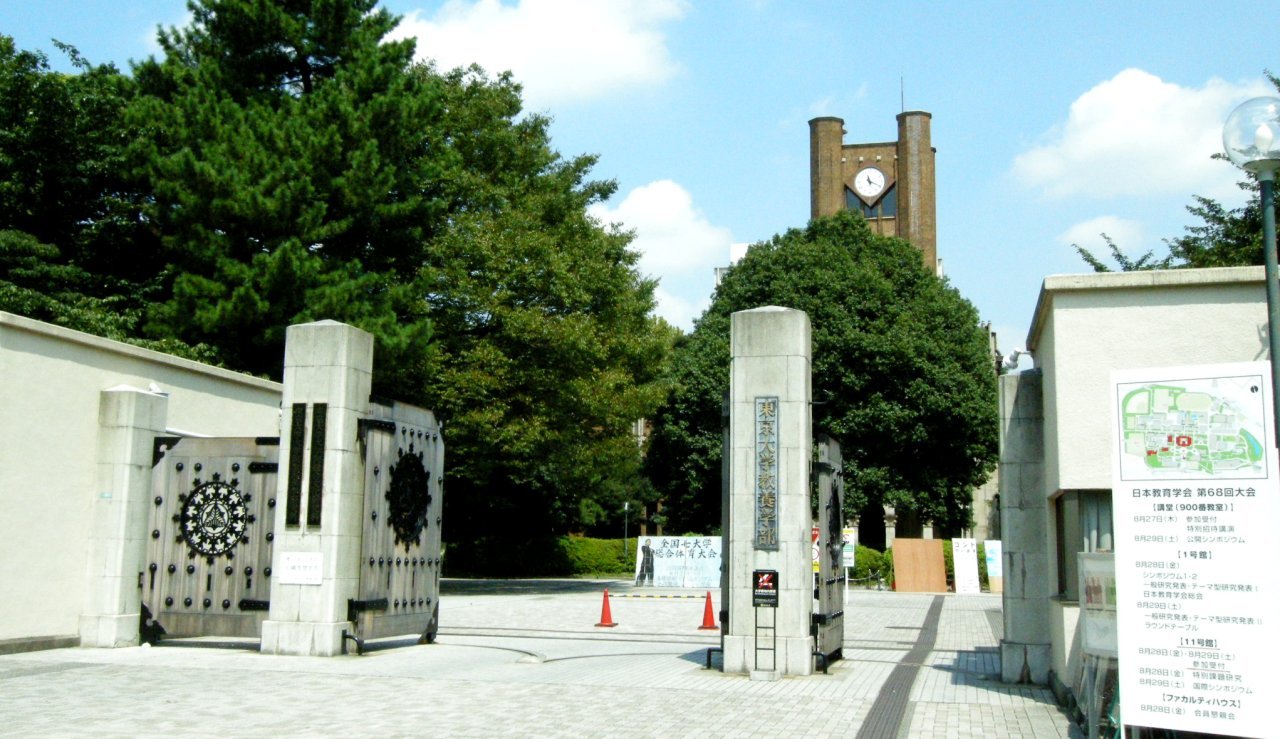
The University of Tokyo, Komaba Capmus, 2009 Nikon Museum The Nikon Museum opened in October 2015, just a step ahead of the actual anniversary year. In addition to showing the milestone of Nikon, the venue will allow visitors to experience Nikon's legacy and innovation.
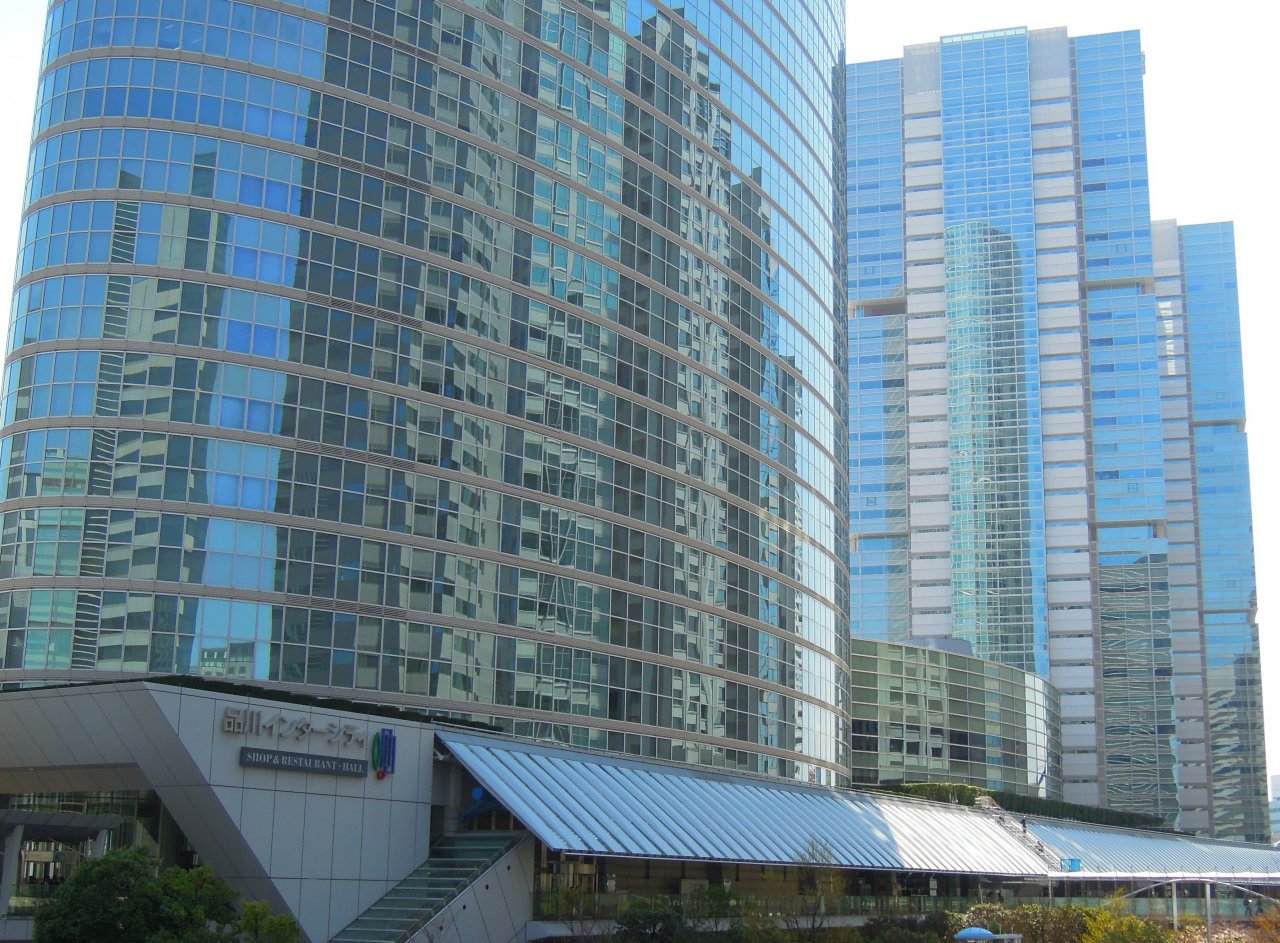
Nikon Museum, Shinagawa Tokyo At the Nikon Museum you will be able to see more than 450 Nikon cameras. You will also see prototypes of Nikon I No. 6091 and Nikon F. And famous Ultra Micro Nikkor 29.5mm F1.2 lens is also exhibited.
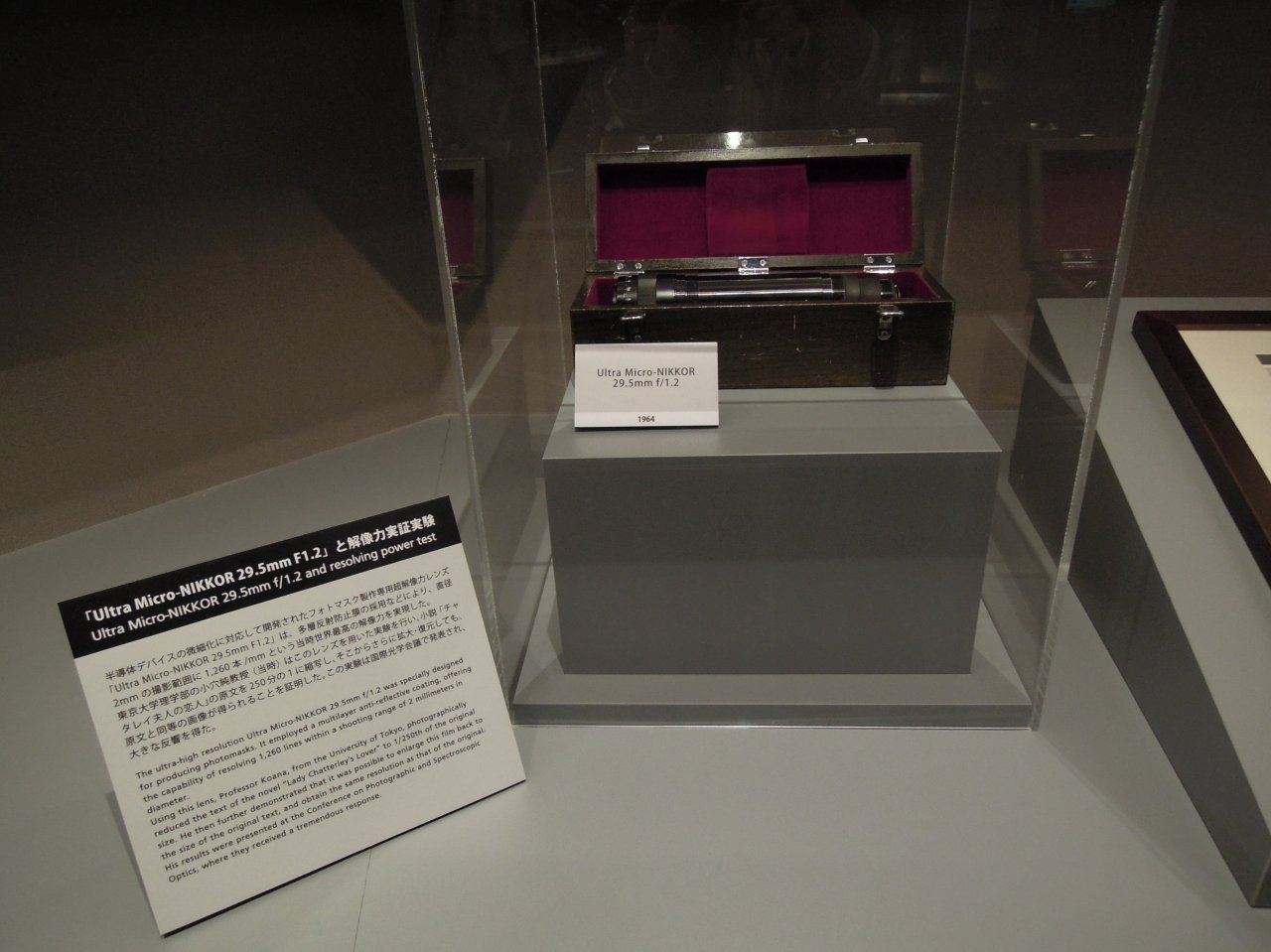
Ultra Micro Nikkor 29.5mm F1.2
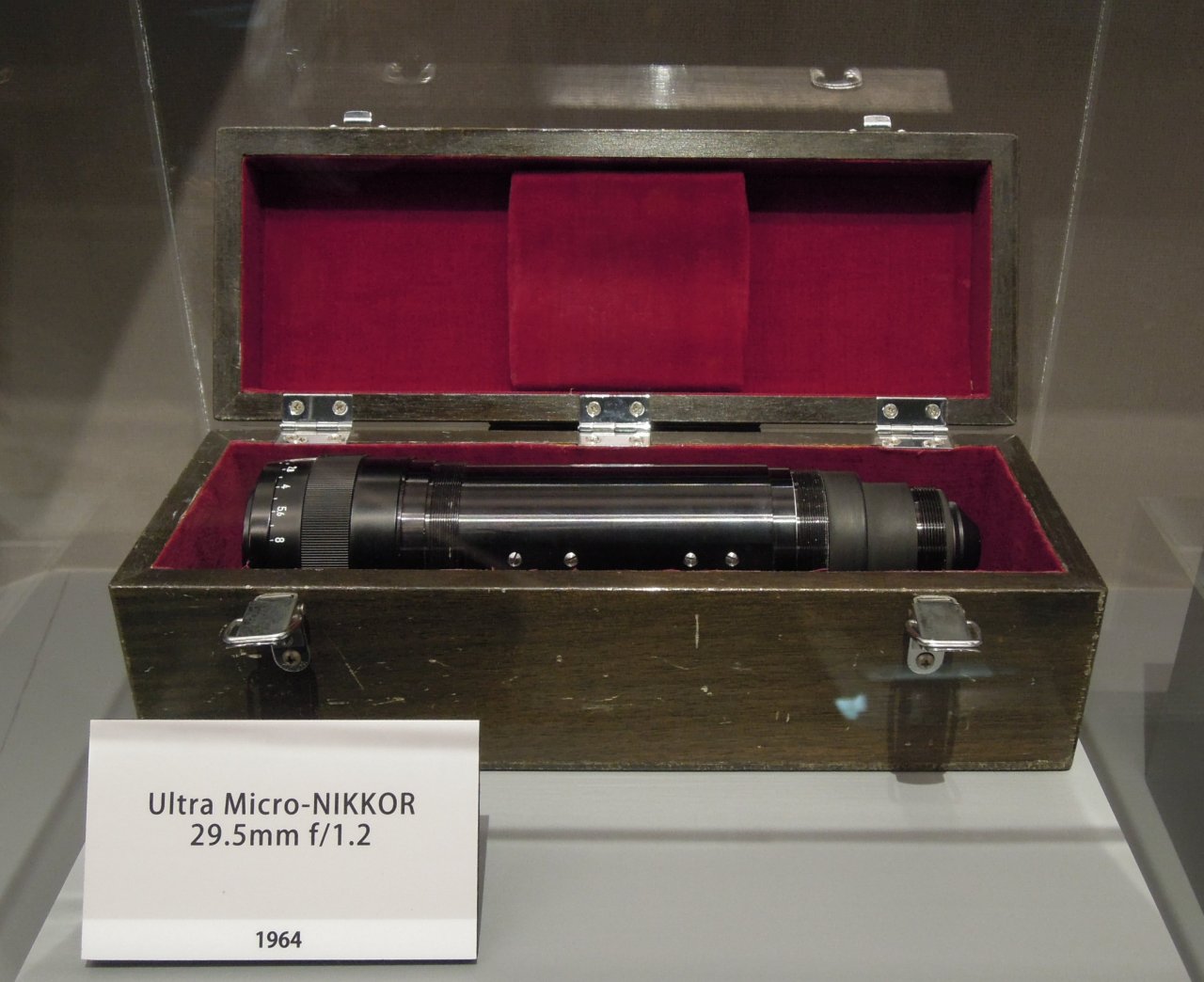
Ultra Micro Nikkor 29.5mm F1.2 From July 2018, Ultra Micro Nikkor 29.5mm F1.2 with manufacturing serial number No. 5403 was permanently displayed at Nikon Museum. This No. 5403 lens was exhibited at "Dr. Zyun Koana Special Exhibition" in the summer of 2009.
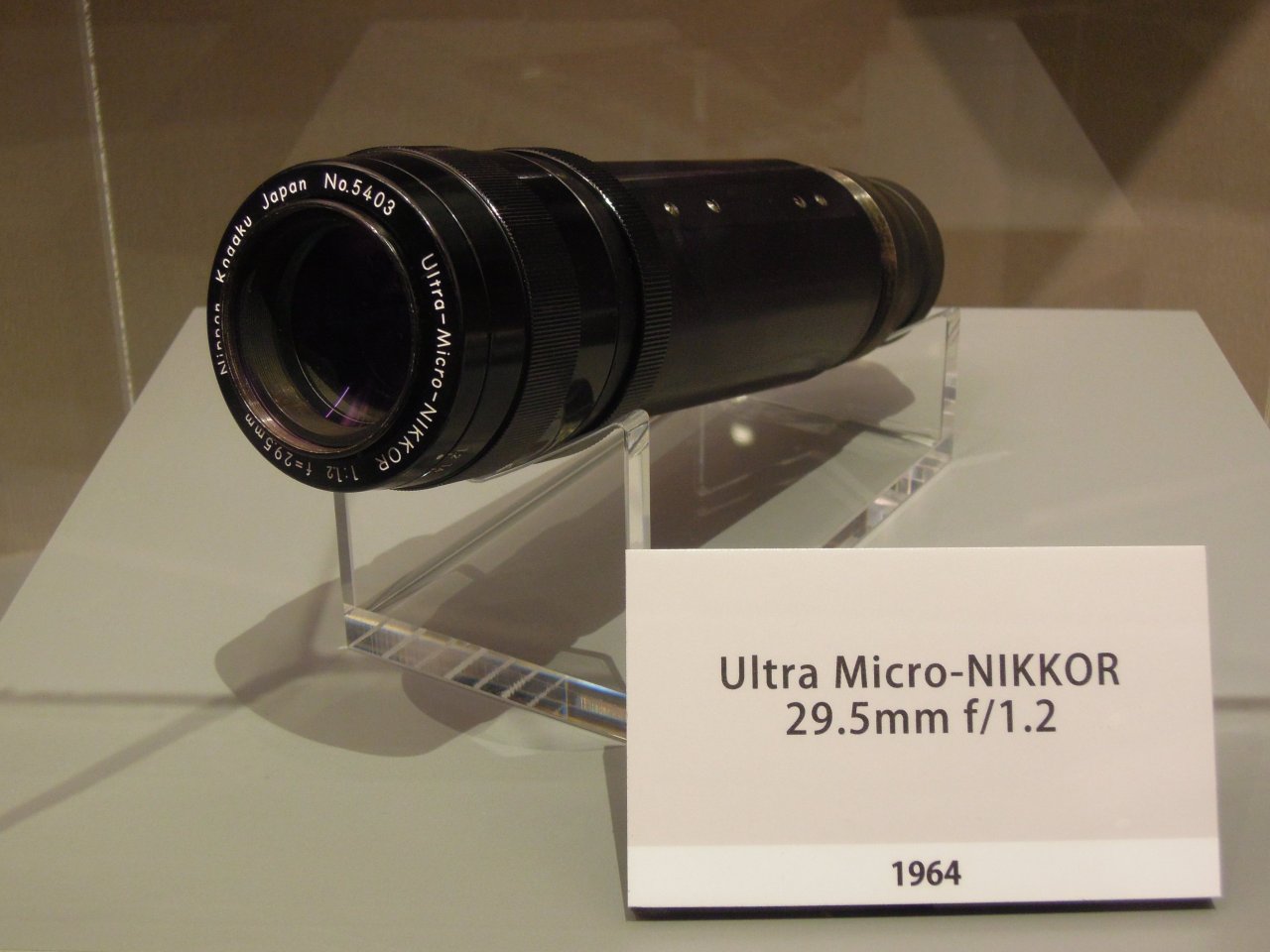
Ultra Micro Nikkor 29.5mm F1.2 No. 5403 Nikon Museum Special Exhibition
Nikon Museum held a special exhibition entitled
"Ultra-Micro-NIKKOR - a Genealogy of the World's Highest Resolution Lenses"
from April 3 to June 30, 2018.
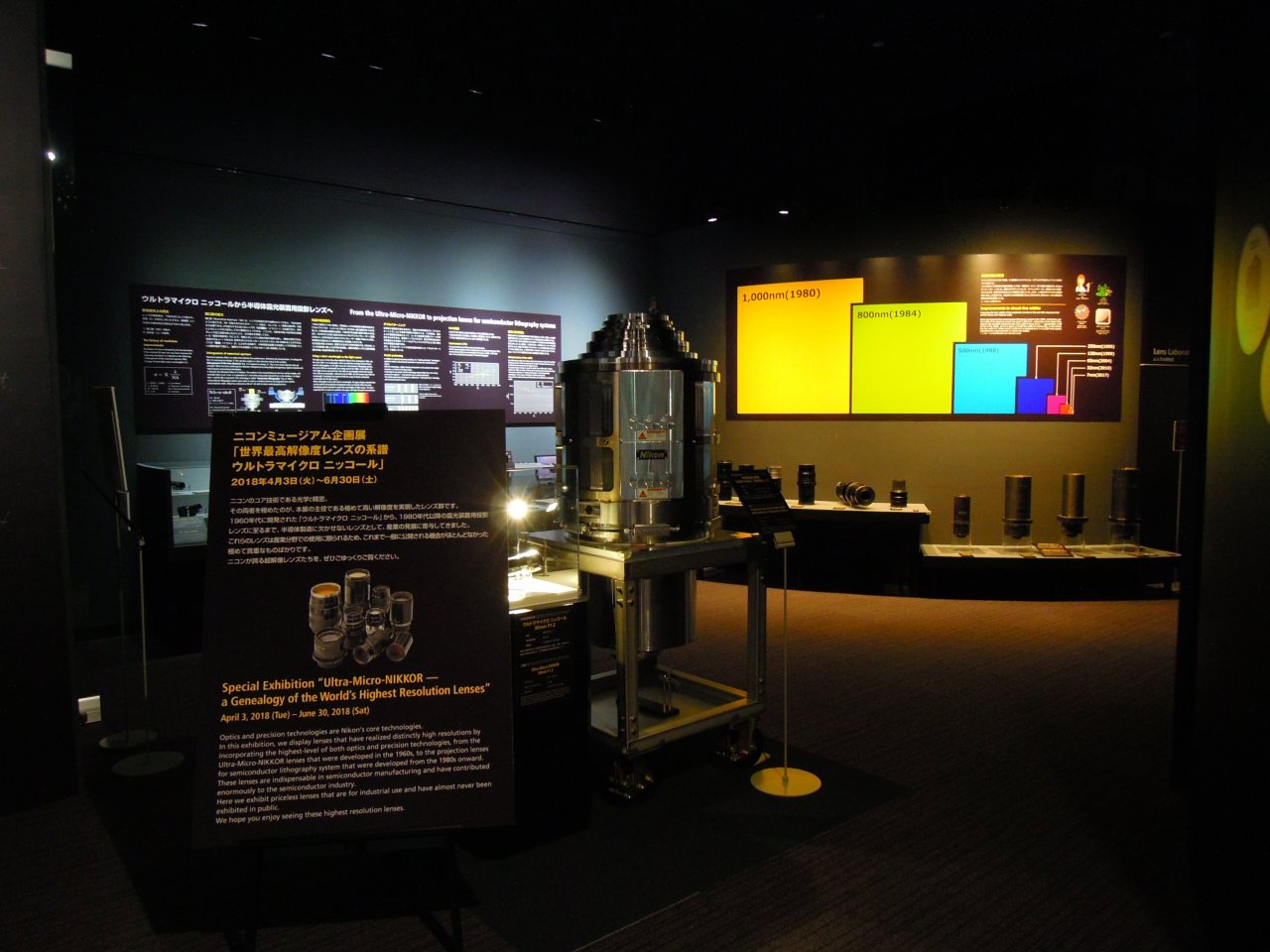
The Nikon Museum Special Exhibition Ultra-Micro-NIKKOR
Copyright Michio Akiyama, Tokyo Japan 2001, 2023
|